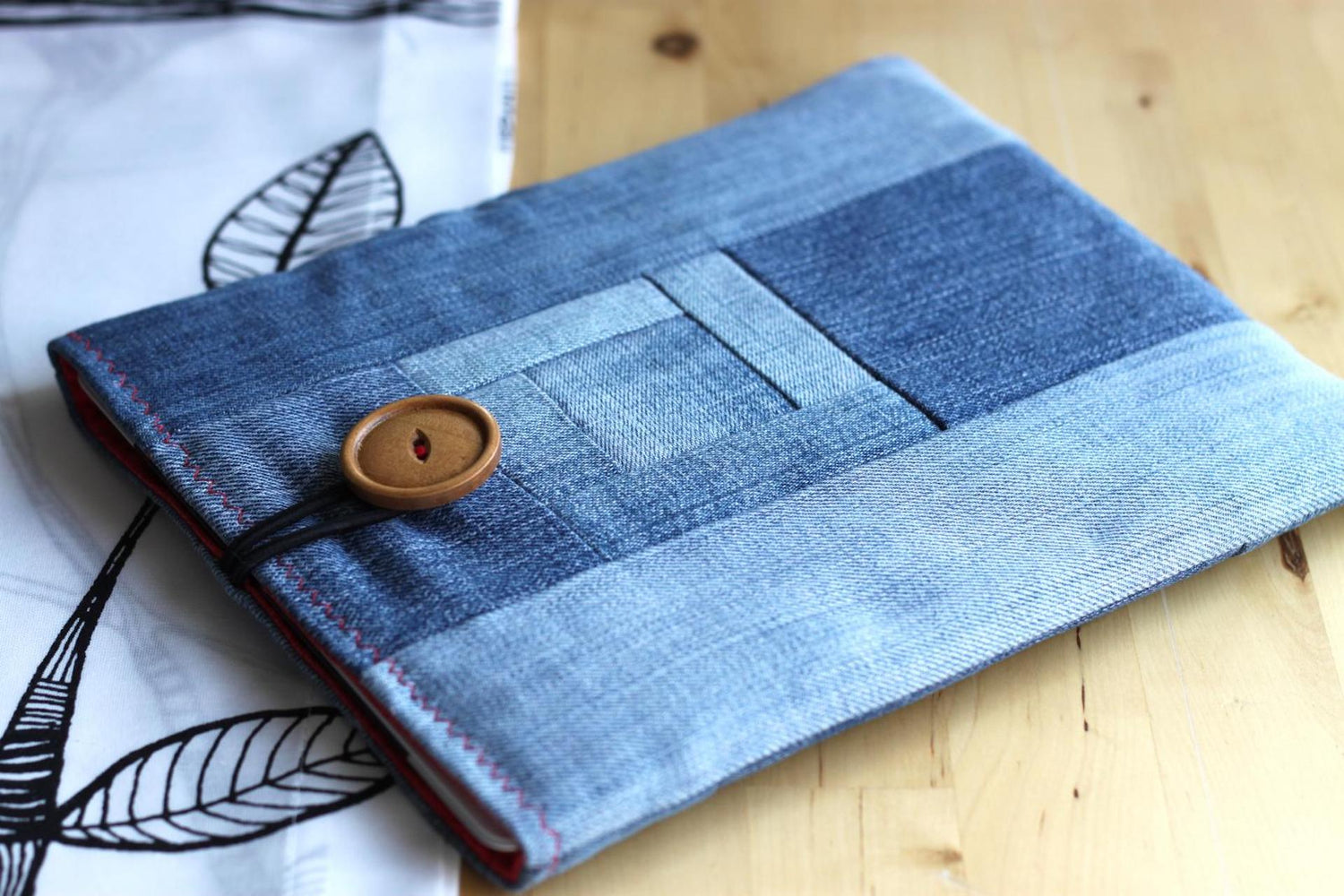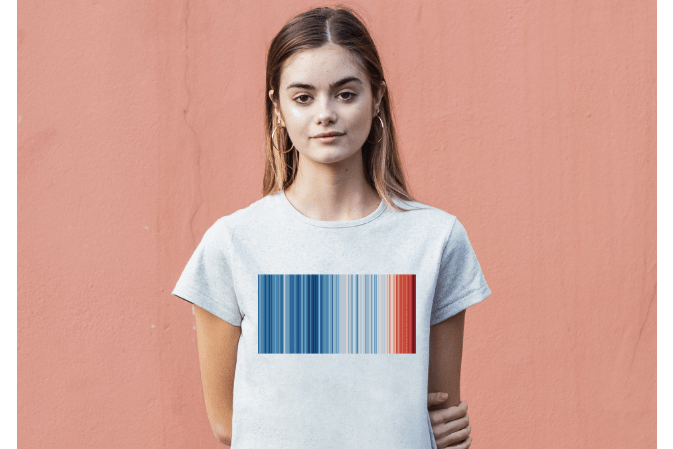It’s ironic how early in our lives many of us were told to “reuse, reduce, and recycle”, and yet we’re facing a dire climate crisis that’s begging us to rethink so many ways of the world. Back then, all it took was a bit of uninhibited creativity to come up with other uses for scrap pieces of paper before deciding to toss it in the bin.
With the omnipresent demand for positive change, recycling is one of the most commonly cited processes when a business wants to preach sustainability. But, it’s not always the most accurate. A better move would be to specify the type of recycling in play.
In this post, we look at the differences between recycling, upcycling, and downcycling, and share some of our favourite brand examples.

Recycling
Ever wondered what happens to a pair of jeans when you toss them into the recycling bin? Or, what your POMP essential t-shirt is actually made from?
Recycling isn't just about sorting through the trash. Nope. It’s about giving textiles (and other materials) a second chance, transforming used items into new threads without losing their essence.
Thanks to the Copenhagen Fashion Summit, we learned that brands produce about 92 million tonnes of textile waste annually. And that’s largely the fault of fast fashion. But aside from preventing unnecessary waste, recycling cuts down on the energy and water needed for virgin fabric production, reducing the overall footprint.
There are some limitations, though. Quality can take a hit, as fibres typically degrade during the process (we touch on this in a post covering the challenges of sustainable fashion). Plus, not everything is recyclable, and contamination can be an issue. But with increased awareness and active participation, we can all weave a greener fashion story. Recycling your old clothes doesn’t take much effort, at least on the part of the wearer, but the collective impact of those actions is surely promising.
Here are three brands that use recycled materials in their products.
• Makes: organic cotton clothing
• Price range: £
• Recycled material/s: cotton
• Based in: UK
Sure, we’re your go-to for organic cotton basics since all our pieces feature certified organic cotton. But did you know about our Recycled Range? It includes our #ShowYourStripes collaboration, showcasing the warming stripes graphic by Professor Ed Hawkins. To do all this, we take in your old POMP pieces (check out the QR code on the care label for instructions) before turning them into new clothes.
Plus, we only create on demand in order to avoid overproduction. What’s not to love?
 Fashion meets climate science: get involved by wearing a #SYS product and share your photo.
Fashion meets climate science: get involved by wearing a #SYS product and share your photo.
• Makes: circular footwear
• Price range: ££
• Recycled material/s: plastic bottles, rubber
• Based in: US
Get this. These sneakers aren’t just made from recycled materials like natural rubber and plastic bottles. They’re designed to be recyclable, too.
Thousand Fell makes full-circle footwear: shoes that are made to last, built to recycle. Their whole mission is based on the idea that nothing should have to go to a landfill. All materials are chosen with biodegradation and recyclability (or upcyclability) in mind. And if someone no longer wants to hold on to their kicks, they can send them in and earn credit in return. All brands are welcome! What can’t be recycled can be donated to those in need. Full details on their SuperCircle programme here.
• Makes: eco-conscious jewellery
• Price range: £££
• Recycled material/s: sterling silver, gold vermeil, 14K gold
• Based in: Spain
We get it. Apart from style, jewellery is - and has always been - a symbol of status. But the fine gems trade is no stranger to human rights violations. So in the same way people are choosing to be more conscious of the clothing brands they support, why not do the same with accessories?
Mila Sai produces locally, within Spain, working with glass and metal artisans. Every piece is handmade, which means no two are ever the same, making them extra special. Glass is taken from discarded bottles and other thrown-away glass objects, while the other elements (silver, gold, etc.) are recycled. If you want to learn more, have a peek over here.
Upcycling
On to upcycling! It's a practice that might’ve been less understood once upon a time, but we’d say it’s officially trending.
If it wasn’t clear, upcycling is a type of recycling. The kind where the recycled product has a greater end value. It’s not just keeping resources in the loop. It’s raising their value. Think of a jacket stitched together from scraps of denim fabric. Or a tote bag made from leftover pieces of cut-up leather. These are all very real examples of upcycled products. Just check out Sukkha Citta and Vaan & Co.!
But navigating upcycling isn't always a walk in the park. Challenges include sourcing a consistent supply of suitable materials and ensuring the quality and durability of the upcycled products. Still. While the fashion industry continues to develop innovative solutions, upcycling is a clear win when sustainability is the goal.
In the meantime, here are a few more brands that incorporate circularity with their upcycled goods.
• Makes: upcycled clothing
• Price range: £££
• Upcycled material/s: deadstock fabric and unsold inventory
• Based in: South Korea
RE;CODE is an environmentally- and socially-conscious brand that uses upcycling as a means to represent the values most important to them: sustainability, creativity, and responsibility.
They prioritise leftover textiles and unsold fashion inventory when creating their pieces. Otherwise, raw materials are selected for their eco-friendly nature. On top of that, they provide jobs - and support activities - to the socially disadvantaged, engaging with single mums, North Korean defectors, and the like. As a final touch, RE;CODE operates repair and refurbishment services so that you’ll never have to throw your clothes away.
• Makes: ethically-made clothing
• Price range: ££
• Upcycled material/s: deadstock sari fabric
• Based in: Germany
Yahmo is a Berlin-based fashion brand. Steering clear of large-scale suppliers, they opt for a more intimate approach, collaborating with the same family-run tailor shop in Mumbai, India, since 2016.
What defines them is not just their commitment to fair working conditions but their dedication to storytelling through vintage-inspired modern pieces. In addition to using raw natural materials, Yahmo takes it up a notch with their Upcycled Collection. These limited collections for both men and women breathe new life into unused Indian sari fabrics. In an industry often marred by exploitative practices, Yahmo acts as a beacon.
• Makes: few-of-a-kind womenswear
• Price range: £££
• Upcycled material/s: vintage fabric
• Based in: US
girl of the earth is the manifestation of founder Ruby Sinclair's style and values. She constantly references being raised by antique-dealer parents in New York as a major influence. But what sets the brand apart is that every garment is made only from vintage fabrics dating 1930 to 1999.
How exactly does one find textiles that go back decades? Well, Ruby mentions building lifelong relationships with vintage suppliers, flea market owners, and even eccentric grandmas. It’s an unconventional supply chain, marked by an even more laborious process, but girl of the earth is a testament to sustainable fashion and personal style.
Downcycling
And finally, there’s downcycling.
Another form of recycling, downcycling involves breaking down materials into simpler forms. Usually, the result is a lower-quality product. It's like transforming a once-loved organic cotton t-shirt into something slightly less glamorous. A dish rag, perhaps. Or an artist’s canvas photography chopped into the makings of a tote bag.
Downcycling isn't all depressing demotions, though. It still plays a role in waste reduction, preventing landfills from clogging up. We just need to consider the long-term effects. Constant downcycling without addressing the root causes of fashion waste is nothing more than a temporary fix. If a person keeps shopping for a new wardrobe every change of season, even if they downcycle them, you’ll want to get rid of those dirty ol’ rags eventually.
In summary
To simplify things, here are some of the main differences (and similarities) between recycling, upcycling, and downcycling.
• Recycling is about using a resource over and over again
• Upcycling and downcycling are both types of recycling, but not all recycling is equal
• Recycling maintains value
• Upcycling increases value
• Downcycling diminishes value
Upcycling vs. Recycling vs. Downcycling: Conclusion
After breaking it all down, it becomes clear that each approach brings its own set of merits and challenges.
Recycling champions waste reduction, upcycling celebrates creativity and innovation, and downcycling addresses the urgency of repurposing. But in the ever-evolving narrative of fashion, we’re all invited to make better-informed choices, support circular economies, and together influence the future of the industry.
If you’re already thinking about your next purchase, might we suggest taking a look at our Recycled Range? It might be new, but only partially. Just don’t forget to recycle afterwards!
 Your everyday essentials, made better. The Women’s Sustainable Sweatshirt is 50% post-consumer recycled cotton and 50% certified organic cotton.
Your everyday essentials, made better. The Women’s Sustainable Sweatshirt is 50% post-consumer recycled cotton and 50% certified organic cotton.





